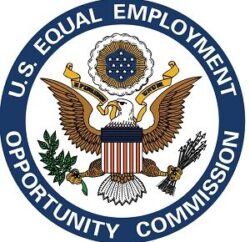 Reaching the 50-employee threshold is a sign that a business is growing and that in itself is an accomplishment. However, this milestone also triggers additional compliance requirements for employers. Small businesses with 50 or more employees must adhere to many local, state, and federal labor laws and should understand the potential impact that these regulatory requirements can have on a business.
Reaching the 50-employee threshold is a sign that a business is growing and that in itself is an accomplishment. However, this milestone also triggers additional compliance requirements for employers. Small businesses with 50 or more employees must adhere to many local, state, and federal labor laws and should understand the potential impact that these regulatory requirements can have on a business.
The implications of crossing the 50-employee threshold can vary from state to state. Most small businesses are required to comply with FMLA, EEO-1 reporting, affirmative action, the ACA, and other state and federal laws.
It is important to note that there are some exceptions to which employees count towards this 50-employee threshold. Learn more about the legal requirements for 50-plus employee organizations and what to consider when approaching this threshold.
Legal Requirements for 50+ Employee Organizations
Organizations that have recently hit the 50-employee mark are required to meet certain legal requirements. It is important to understand these regulations and to discuss them with the organization’s legal counsel to ensure proper HR compliance going forward.
Businesses with between 50 and 99 full-time equivalent (FTE) employees make up approximately seven percent of the private workforce, according to the National Conference of State Legislatures (NCSL). Organizations that have reached this level of success must comply with the following legal requirements:
Family and Medical Leave Act Compliance
Under the Family and Medical Leave Act (FMLA), eligible employees of covered employers are entitled to job-protected, unpaid leave for certain medical and family reasons. A covered employer can be a public agency, a school, or a private-sector employer with 50 or more employees.
When an employee asks for FMLA leave due to an eligible family member’s serious illness or injury or their own serious illness or injury, an organization may request certification from a healthcare provider. Employers may also require a second and third medical opinion, as well as periodic recertification of the serious health condition.
Upon return to the workplace from FMLA leave, the employee must be given his or her original job back or an equivalent job with the same pay and benefits. When an employee uses FMLA leave, this action cannot be counted against the worker based on a “no-fault” attendance policy. Employees must also continue receiving group health coverage while they are on leave.
Affordable Care Act Compliance
The Affordable Care Act (ACA) encourages employers to provide eligible employees with affordable, timely and appropriate health benefits. Any organization that is subject to the ACA must offer affordable health insurance that provides minimum essential coverage to at least 95 percent of their full-time employees.
In regard to the ACA, a full-time employee is considered anyone who works at least 30 hours or more per week or more than 130 hours per month. It is the responsibility of employers to track which employees have fulfilled these criteria and whether or not they would like health coverage.
Employers are also required to provide employees with several pieces of information, including a notice of coverage and available benefits, Form 1095-C (Employer-Provided Health Insurance Offer and Coverage), and a Summary of Benefits and Coverage. Forms 1094-C/1095-C must also be filed with the IRS and applicable state agencies.
Under the ACA, employer-sponsored health plans cannot cost workers more than a certain percentage of their household income. Safe harbor calculators can be used as an alternative method to determine affordability. Certain incentives and wellness benefits that impact the cost of health care can be considered when calculating affordability.
Federal Contractor Requirements
 Federal contractors are organizations that enter contractual agreements with any agency or department of the US government to perform a specific job, for the sale of products or services, or to supply labor and/or materials. Part of doing business with the federal government involves federal contractors and subcontractors to meet certain requirements.
Federal contractors are organizations that enter contractual agreements with any agency or department of the US government to perform a specific job, for the sale of products or services, or to supply labor and/or materials. Part of doing business with the federal government involves federal contractors and subcontractors to meet certain requirements.
Federal contractors are prohibited from discriminating against any job applicant or employee on the basis of sex, race, religion, color, gender identity, sexual orientation, disability, national origin, or status as a protected veteran. They are also required to take affirmative action to ensure that job applicants and employees are treated fairly in regard to all areas of employment, such as recruitment, hiring, retention, promotion, and compensation.
Affirmative Action Plan
An Affirmative Action Plan (AAP) is a type of management tool that employers can use to detail the steps they have taken or will take to ensure that equal employment opportunities are provided to all employees. AAPs outline an organization’s policies, programs, and procedures for recruiting, hiring, promoting and training women, people with disabilities, veterans, and minorities.
The US Department of Labor enforces compliance with affirmative action requirements. There are three main laws that require employers that do business with the federal government to implement affirmative action programs.
- First, the Rehabilitation Act of 1973 requires any contractor with 50 or more employees and that contracts $50,000 or more to take affirmative action regarding eligible individuals with disabilities.
- Second, the Vietnam Era Veterans’ Readjustment Assistance Act of 1974 requires contractors to take affirmative action to hire and advance employment for veterans who have service-related disabilities.
- Third, Executive Order 11246 requires contractors to prepare and maintain a written program that covers the recruitment, hiring, and promotion of minorities and women.
EEO-1 Report
 The EEO-1 report refers to mandatory annual data collection that requires federal contractors with 50 or more employees and private sector employers with 100 or more employees who meet certain criteria to provide demographic workforce data, such as data by ethnicity/race, sex, and job categories.
The EEO-1 report refers to mandatory annual data collection that requires federal contractors with 50 or more employees and private sector employers with 100 or more employees who meet certain criteria to provide demographic workforce data, such as data by ethnicity/race, sex, and job categories.
To ensure compliance, contractors and employers must complete and submit the proper form. Single-establishment companies are required to complete the Standard 100 Form, while multi-establishment companies must file a report covering the headquarters office.
Multi-establishment companies must file a separate report for each branch that has 50 or more employees. They must also complete a consolidated report with all employees who work at branches that have less than 50 employees.
Organizations must ensure that self-identification forms are received from each employee and employee data must be organized by listing employees by job category, location, race, ethnicity, and gender. EEO-1 reports must be completed online on or before the deadline of March 31. Employers must also retain records for a minimum of one year.
Considerations for Organizations Approaching the 50-Employee Threshold
Reaching the 50-employee threshold can be an intimidating experience for HR departments at small businesses. Once this milestone is reached, organizations are bombarded with numerous new reporting and compliance requirements. It is important for companies approaching this point to start preparing for compliance by reviewing current regulations, recruitment demands and local, state, and federal laws.
Here are some things that all organizations nearing the 50-employee mark should consider:
See If Your Benefits Plans Are Subject to Form 5500
Form 5500 is a component of the Employee Retirement Income Security Act (ERISA) and is intended to ensure that employee benefits plans are managed in accordance with certain standards. It also ensures that regulators, participants, and beneficiaries have access to the information needed to protect the rights and benefits of participants and their beneficiaries under covered employee benefits plans.
 All retirement plans, such as 401(k) and profit-sharing plans, must file Form 5500 each year that the plan holds assets. There are several versions of Form 5500 based on an organization’s unique situation.
All retirement plans, such as 401(k) and profit-sharing plans, must file Form 5500 each year that the plan holds assets. There are several versions of Form 5500 based on an organization’s unique situation.
Form 5500 is a general form for most private and public sector businesses with 100 or more participants. Form 5500-EZ is designed for plans with only one participant, such as a single-owner business. Finally, Form 5500-SF is the short-form version for plans that have less than 100 participants.
Ensure Compliance with State Laws
Organizations that have reached the 50-employee level may be subject to certain state regulations, depending on their location. For example, organizations in California that have 50 or more employees are required to provide managers and supervisors with sexual harassment training within six months of them assuming a supervisory position and every two years after that.
Each state is different and some organizations may face more compliance requirements compared to businesses in other states. It is important to perform extensive research to determine what requirements must be met in a particular state and to start preparing for compliance as soon as possible.
Improve Voluntary Benefits Plans
Voluntary benefits, also referred to as supplemental benefits, are benefits offered by employers that are paid for solely or partially by employees through payroll deductions. The biggest advantage of these benefits is that they can be found at group rates that employees would be unlikely to find on their own.
![]() Offering voluntary benefits plans is an excellent way for organizations to fill coverage voids where traditional benefits do not provide sufficient coverage. Some of the most common types of voluntary benefits include health, dental, wellness, financial, security, and personal benefits.
Offering voluntary benefits plans is an excellent way for organizations to fill coverage voids where traditional benefits do not provide sufficient coverage. Some of the most common types of voluntary benefits include health, dental, wellness, financial, security, and personal benefits.
Many voluntary benefits can be added to an employer’s benefits package at little to no cost to them as employees are often willing to pay for this coverage themselves. Employers who offer popular supplemental benefits often discover an increase in employee productivity, a decrease in employee turnover, and an increase in the talent pool available to them during recruitment.
Speak with New City About the 50- Employee Threshold
While reaching the 50-employee threshold is an exciting milestone that deserves to be celebrated, employers must also consider what changes they will encounter. Working with an experienced employee benefits consulting firm can help organizations prepare for these changes.
New City Insurance is a reputable employee benefits consulting firm that specializes in consulting, benefits, compliance, insurance, and tech services. Schedule a consultation to learn more about the requirements for organizations that reach the 50-employee threshold or contact New City Insurance.
